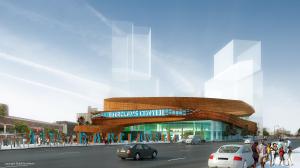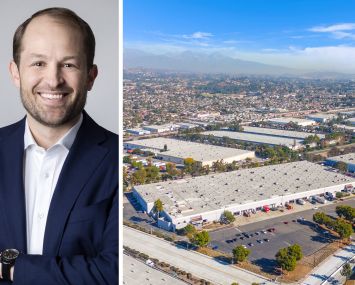Once Again, State Approves Atlantic Yards; City May Pay Ratner for Infrastructure Work
By Eliot Brown September 17, 2009 9:01 pm
reprints Bruce Ratner today got to check off another box on his Atlantic Yards “To-Do Before the New Year” list.
Bruce Ratner today got to check off another box on his Atlantic Yards “To-Do Before the New Year” list.
The state’s development agency Thursday morning approved Mr. Ratner’s revised plan for his $4.9 billion Brooklyn project, giving New York’s assent to the planned Nets arena as well as the surrounding 15 apartment towers nearly three years after the state’s initial approval. (Changes were made to plans for phasing and the size of the arena amid the economic crisis.)
The O.K. now leaves one less loose end as Mr. Ratner scrambles to get financing before a Dec. 31 deadline imposed by the IRS. Still, opponents threatened more litigation as the agency, the Empire State Development Corporation, re-approved the project, and perhaps even more lawsuits loom as the state plans to approve about $700 million in tax-free financing for the arena. (A Reuters story from this afternoon, with a dateline of Moscow, reported that Russia’s richest man, Mikhail Prokhorov, is “preparing an offer” to help the financing of the Nets arena.)
Mr. Ratner’s Forest City Ratner appears to be rounding up as much cash as it can as the year closes, as the ESDC said it would speed up an outstanding $25 million in subsidy, loosening the restrictions on the money.
The city, which has another $15 million in subsidy not yet given to Forest City, would be allowed to do the same, according to the ESDC document, speeding up its payments by loosening restrictions. Further, in a footnote in a state document, it was revealed that the Bloomberg administration may simply pay Forest City Ratner to do infrastructure work that it had been planning to do itself, giving the developer the cash upfront in the coming weeks or months, an additional subsidy of sorts. (The project is already heavily subsidized; a recent analysis by the Independent Budget Office found the arena was a net-loss for the city if the subsidies are counted specifically for the arena and not the broader project, though the city and state attacked the methodology.)
From the document, a memo to ESDC board members:
The City has also agreed to make available additional funds for neighborhood related infrastructure improvements typically funded by City agencies. A portion of these additional funds may be made available by the City directly to ESDC, in which case, the City Funding Agreement will be amended to reflect the same. Subject to the submission of satisfactory documentation, it is anticipated that remaining City funds, plus any additional funds, if any, will be disbursed from the City to ESDC at closing and ESDC shall simultaneously disburse the same to Forest City.
The city has another $105 million in infrastructure subsidies related to the project that were meant to be carried out by city agencies, though it was not clear exactly how much the city would give. (A spokesman for the city’s Economic Development Corporation said there is not yet a final agreement.)
A series of project opponents and critics focused on Atlantic Yards’ environmental requirements, saying the ESDC should have done a supplemental environmental review, suggesting this will be the source of more litigation. Among other points, the critics focused on the fact that ESDC documents held that the project is intended to take 10 years, which seems a bit of quixotic thinking given the state of the economy (and the Council of Brooklyn Neighborhoods recently released a report suggesting such a fast build-out would be financially infeasible). The ESDC countered that its consultant, KPMG, had found that it was a “not unreasonable” assumption that the market could absorb that much new development at once—presumably a phrasing intentionally chosen over the less awkward “reasonable assumption.”
ebrown@observer.com


